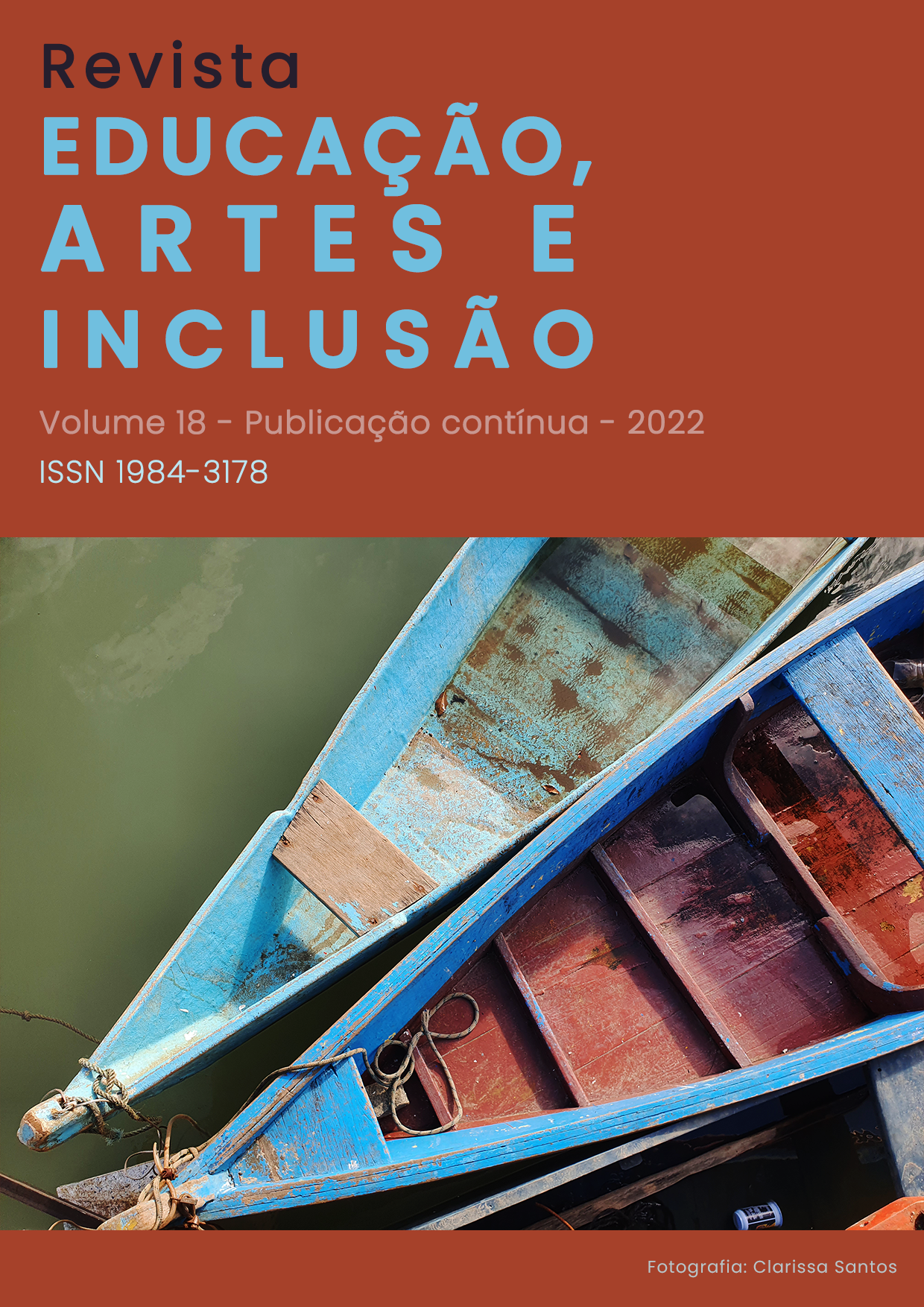Singularities on stage: how to subvert the logic of normalization
DOI:
https://doi.org/10.5965/19843178182022e0029Keywords:
Inclusion, Normalization, The exoticized body, Singularity, Contemporary danceAbstract
When discussing studies on inclusive practices, we can often form a narrative as to how the inclusion of disability has been understood at different times: through segregation, the insertion of disabled individuals in social spaces, and through inclusive strategies that actively recognize the needs of each individual. Lately, another perspective has increasingly been in evidence: that of coopting disability and treating it as a product. Work by Mitchell and Snyder (2015) and Pelbart (2013) are of fundamental importance to understand this trend. The present article centers on examples from contemporary dance by artists such as Jérôme Bel and Claire Cunningham, intending to reflect on how normalization has affected the universe of body arts. Many dance troupes still work through a lens which reaffirms overcoming one’s limitations and erasing the singularity of one’s condition – by copying unimpaired bodies. Thus, we seek to identify normalizing processes, which have been recurring tropes in dance, but also to showcase those pieces which have succeeded in retaining the diversity of the differently-abled on stage. One hopes that this can lend support to studies of inclusion and the arts, by highlighting the creative potential of disabled artists when they are left unrestricted by normalization.
Downloads
References
BARROS, Manoel de. Livro sobre nada. São Paulo: Alfaguara, 2016.
BIANCHI, Paloma. Corporeidades dissonantes: reflexões sobre o espetáculo Disabled Theater. Revista Sala Preta, São Paulo, v. 16, n. 2, p. 145-156, 2016.
BRASIL. Declaração de Salamanca. Brasília: Coordenadoria Nacional para Integração da Pessoa Portadora de Deficiência, 1994. Disponível em: http://portal.mec.gov.br/seesp/arquivos/pdf/salamanca.pdf Acesso em: 17 mar. 2020.
COLLINS, Patricia Hill. What’s in a name? Womanism, Black feminism and beyond. The black scholar, vol. 26, n. 1, p. 9-17, 1996.
COURTINE, Jean-Jacques. Decifrar o corpo: pensar com Foucault. Trad. Francisco Morás. Petrópolis: Vozes, 2013.
MITCHELL, David T.; SNYDER, Sharon L. The biopolitics of Disability – neoliberalism, ablenationalism, and peripheral embodiment. Ann Arbor: University of Michigan Press, 2015.
MUNHOZ, Angelica Vier. Jérôme Bel e o grau zero: dançar, ensinar, viver. Revista Contemporânea de Educação, Rio de Janeiro, v. 13, n. 28, p 844-856, 2018.
PELBART, Peter Pál. O avesso do niilismo – cartografias do esgotamento. São Paulo: n-1, 2013a.
PELBART, Peter Pál. Viver não é sobreviver: para além da vida aprisionada. In: Seminário Internacional Educação Medicalizada: reconhecer e acolher as diferenças, 2013b, São Paulo. Conferência de abertura. Disponível em: https://www.youtube.com/watch?v=qaHSIm91OII Acesso em: 17 mar. 2020.
SÃO PAULO (estado). Relatório mundial sobre a deficiência. World Health Organization, The World Bank. Trad.: Lexicus Serviços Linguísticos. São Paulo: SEDPcD, 2012. 334 p. Disponível em: https://apps.who.int/iris/bitstream/handle/10665/44575/9788564047020_por.pdf?sequence=4 Acesso em: 17 mar. 2020.
SOUZA, Virgínia Laís. Quando o monstro convoca a resistência biopolítica: estratégias comunicativas na arte e na vida. 2017. Tese (Doutorado em Comunicação e Semiótica). Pontifícia Universidade Católica de São Paulo, 2017.
Downloads
Published
How to Cite
Issue
Section
License
Copyright (c) 2022 Virgínia Laís de Souza

This work is licensed under a Creative Commons Attribution-NonCommercial-ShareAlike 4.0 International License.
Copyright Statement
The Educação, Artes e Inclusão is a journal that follows the Free Access Policy. The articles published by the journal are free of charge, intended for educational and non-commercial applications. The articles whose authors are identified represent the expression from the point of view of their authors and not the official position of the Educação, Artes e Inclusão Journal or the Educação, Artes e Inclusão Research Group.
Authors who publish in this journal agree to the following terms:
(A) Authors retain the copyright and grant the journal the right of first publication, with the work simultaneously licensed under the Creative Commons Attribution License which allows the sharing of the work with acknowledgment of authorship and initial publication in this magazine.
(B) Authors are authorized to take additional contracts separately, for non-exclusive distribution of the version of the work published in this journal (eg publish in institutional repository or as a book chapter), with acknowledgment of authorship and initial publication in this magazine.
(C) This journal provides public access to all of its content, as this allows for greater visibility and scope of published articles and reviews. For more information on this approach, visit the Public Knowledge Project.
This journal is licensed under a Creative Commons Attribution-NonCommercial-ShareAlike 4.0 International License. This license allows others to remix, adapt and create from your work for non-commercial purposes, and although new work must give you due credit and cannot be used for business purposes, users do not have to license such derivative works under the same terms.



